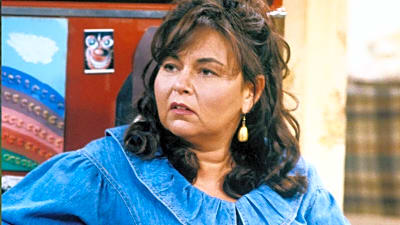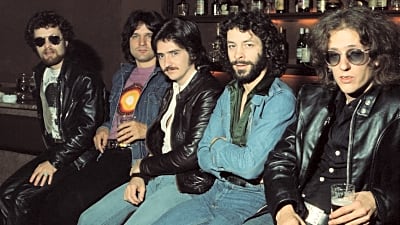- Home
- Quizzes
- My Quiz Activity
- Newsletters
- MY FAVORITES
- Add Sports/Teams
- SPORTS
-
NFL
- NFL Home
- Arizona Cardinals
- Atlanta Falcons
- Baltimore Ravens
- Buffalo Bills
- Carolina Panthers
- Chicago Bears
- Cincinnati Bengals
- Cleveland Browns
- Dallas Cowboys
- Denver Broncos
- Detroit Lions
- Green Bay Packers
- Houston Texans
- Indianapolis Colts
- Jacksonville Jaguars
- Kansas City Chiefs
- Las Vegas Raiders
- Los Angeles Chargers
- Los Angeles Rams
- Miami Dolphins
- Minnesota Vikings
- New England Patriots
- New Orleans Saints
- New York Jets
- New York Giants
- Philadelphia Eagles
- Pittsburgh Steelers
- San Francisco 49ers
- Seattle Seahawks
- Tampa Bay Buccaneers
- Tennessee Titans
- Washington Commanders
-
MLB
- MLB Home
- Athletics
- Arizona Diamondbacks
- Atlanta Braves
- Baltimore Orioles
- Boston Red Sox
- Chicago White Sox
- Chicago Cubs
- Cincinnati Reds
- Cleveland Guardians
- Colorado Rockies
- Detroit Tigers
- Houston Astros
- Kansas City Royals
- Los Angeles Angels
- Los Angeles Dodgers
- Miami Marlins
- Milwaukee Brewers
- Minnesota Twins
- New York Yankees
- New York Mets
- Philadelphia Phillies
- Pittsburgh Pirates
- San Diego Padres
- San Francisco Giants
- Seattle Mariners
- St. Louis Cardinals
- Tampa Bay Rays
- Texas Rangers
- Toronto Blue Jays
- Washington Nationals
-
NBA
- NBA Home
- Atlanta Hawks
- Boston Celtics
- Brooklyn Nets
- Charlotte Hornets
- Chicago Bulls
- Cleveland Cavaliers
- Dallas Mavericks
- Denver Nuggets
- Detroit Pistons
- Golden State Warriors
- Houston Rockets
- Indiana Pacers
- Los Angeles Clippers
- Los Angeles Lakers
- Memphis Grizzlies
- Miami Heat
- Milwaukee Bucks
- Minnesota Timberwolves
- New Orleans Pelicans
- New York Knicks
- Oklahoma City Thunder
- Orlando Magic
- Philadelphia 76ers
- Phoenix Suns
- Portland Trail Blazers
- Sacramento Kings
- San Antonio Spurs
- Toronto Raptors
- Utah Jazz
- Washington Wizards
-
NHL
- NHL Home
- Anaheim Ducks
- Boston Bruins
- Buffalo Sabres
- Calgary Flames
- Carolina Hurricanes
- Chicago Blackhawks
- Colorado Avalanche
- Columbus Blue Jackets
- Dallas Stars
- Detroit Red Wings
- Edmonton Oilers
- Florida Panthers
- Los Angeles Kings
- Minnesota Wild
- Montreal Canadiens
- Nashville Predators
- New Jersey Devils
- New York Islanders
- New York Rangers
- Ottawa Senators
- Philadelphia Flyers
- Pittsburgh Penguins
- San Jose Sharks
- Seattle Kraken
- St. Louis Blues
- Tampa Bay Lightning
- Toronto Maple Leafs
- Utah Mammoth
- Vancouver Canucks
- Vegas Golden Knights
- Washington Capitals
- Winnipeg Jets
- NCAAF
- NCAAM
- Olympics
- Boxing
- Entertainment
- Lifestyle
- Golf
- MMA
- Soccer
- Tennis
- Wrestling
- Sports Betting
- More Sports
- RESOURCES
- My Account
- YB on Facebook
- YB on Twitter
- YB on Flipboard
- Contact Us
- Privacy Policy
- Terms of Service
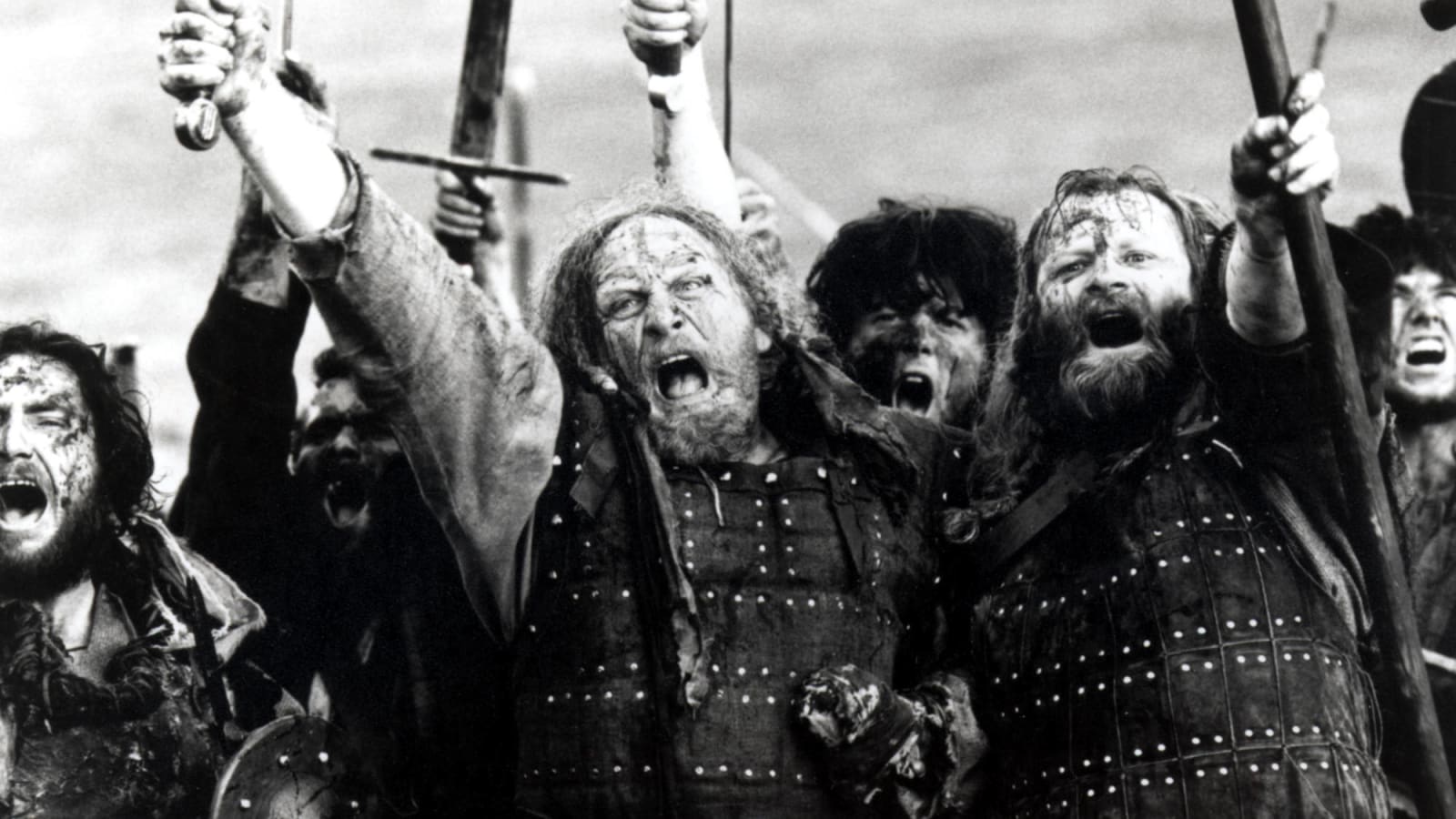
The 25 greatest battle scenes in film history
In 1995, two years after "Jurassic Park" raised audiences' expectations for the Hollywood summer movie spectacle, the studios found themselves uncomfortably caught between old-school practical action and newfangled CG f/x. The industry's growing pains were perfectly represented in its Memorial Day offerings, primarily "Casper" and "Braveheart." The former was a Spielberg-produced fantasy with state-of-the-art digital magic; the latter was an old-fashioned period epic featuring brawny men stabbing and hacking one another on the field of battle. In the end, it was Mel Gibson's film that captivated moviegoers. Despite its three-hour length, its hero had a resonant goal ("Freedom!") and those combat sequences — both invigorating and terrifying — demanded to be seen on the big screen. Twenty-five years after the release of this Best Picture winner, let's take a look back at some of the most memorable battle scenes in film history.
"Braveheart"
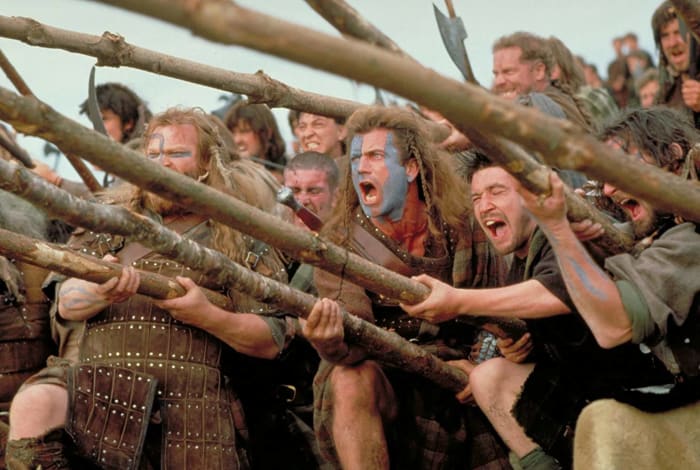
“Sons of Scotland, I am William Wallace!” After earning his directorial bona fides with 1993’s“The Man Without a Face," Mel Gibson shot the moon with this madly ambitious tale of the man who helped spark Scotland’s war for independence. The film is so bluntly modern in its sensibility that you cast aside any expectation of historical accuracy early on and simply enjoy the show — and, my, how Gibson delivers. There are two major battle sequences, but it’s the first, the Battle of Stirling, that stays with you. Badly outnumbered by the English, Wallace gives a rousing “St. Crispin’s Day” speech and leads the Scots into combat. Emulating Orson Welles’ “Chimes at Midnight," Gibson splices in crystalline moments of battlefield savagery: heads roll, limbs are rent, skulls are smashed under helmets. Finally, the Scots stand triumphant, and James Horner’s bagpipe-infused score kicks in. In Gibson’s world, war is a necessary hell.
"Chimes at Midnight"

Orson Welles’ retelling of Shakespeare’s Sir John Falstaff chronicles finds the filmmaker pulling off yet another rugged miracle with impossible preconditions and insufficient resources. It’s a master class in adaptation. Welles knows the works — “Henry IV Part 1”, “Henry IV Part 2," “Henry V," “Richard II” and “The Marry Wives of Windsow” — so thoroughly that he’s able to condense them into one bracing 119-minute movie. The director’s inventiveness is on towering display in his staging of the Battle of Shrewsbury, which uses low angles and close-ups to give the looming conflict the epic scale Welles could not afford. Then comes the fight, where the armored men clash astride their horses at murderous velocity. Welles thrusts his camera into the fray, capturing the brutality of close-quarters combat with an onslaught of quick-cut images that are jarring but never disorienting. Unlike “Braveheart, there is no glory here — only death.
"The Longest Day"
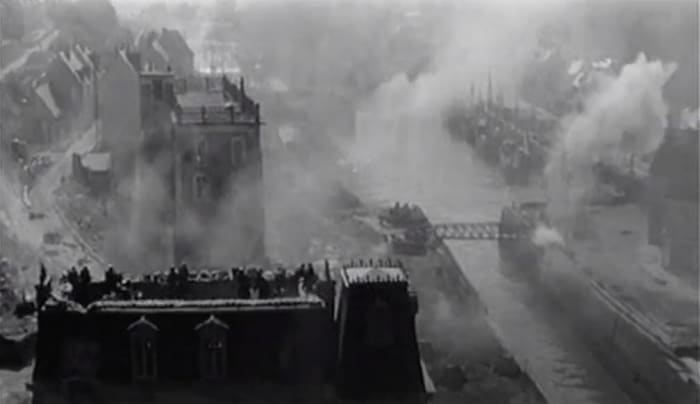
Darryl F. Zanuck’s star-studded account of the D-Day invasion is strange collision of Old Hollywood sensibilities and New Hollywood ingenuity. Directed by the trio of Ken Annakin, Andrew Marton and Bernhard Wicki, it’s frustratingly uneven and downright tedious at times, but it’s essential viewing for the big-budget moments that work. The film peaks with Annakin’s staging of the French assault on Ouistreham, which is captured in one continuous aerial shot. This is the bird’s-eye opposite of “Chimes at Midnight”; it’s a logistical marvel that soars over the French troops and past enemy lines to show the heavy artillery they’re up against. When Annakin cuts back to ground level, you know exactly why the French commander orders his men to fall back.
"Saving Private Ryan"
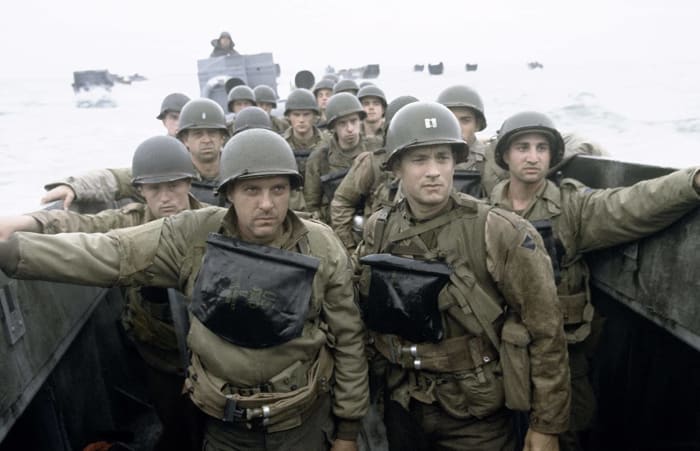
Prior to “Saving Private Ryan," Hollywood’s depiction of the D-Day invasion had generally been framed as a triumph of can-do American heroism; our troops bravely scampered onto the beach and skillfully neutralized machine gun nests to pierce the enemy’s fortifications. So the opening 27 minutes of Steven Spielberg’s was a shock to the system for most moviegoers. Filmed in jittery vérité style, audiences watched in horror as a multitude of soldiers stormed out of their landing craft only to be cut in half by MG 42 machine guns, drown under the weight of their gear or get blown to bits by mortar fire. There were reports of people fleeing the theater. The U.S. Department of Veterans Affairs had to set up a hotline to help PTSD-afflicted soldiers triggered by the intensity of the sequence. While you could make a case that the film’s final battle sequence is a superior feat of craftsmanship, the Omaha Beach scene left a much deeper cultural imprint.
"Ran"

Akira Kurosawa’s medieval reworking of “King Lear” hits a nightmarishly poetic peak when two of the aging warlord’s sons lay siege to the castle in which their father has taken refuge. Hugely outnumbered and growing increasingly mad, death suddenly engulfs the impotent ruler. The warlord unsheathes his sword and attempts to defend himself, but his sword snaps off at the hilt; arrows rain down on his quarters; his loyalists commit suicide. It’s as visually stunning as every other sequence in the film, but what sets this moment apart is Kurosawa’s decision to drop out the roar of combat and isolate Tôru Takemitsu’s eerily mournful score.
"Lawrence of Arabia"

The Arab rebels’ attack on the Ottoman stronghold of Aqaba was a strategic gamble that turned into a relatively bloodless rout, but it’s an exhilarating drubbing in the hands of David Lean. In (mostly) one long shot, we watch as hundreds of stunt men flood through their caught-unawares enemies’ encampment to take the port city from behind. It’s a breathtaking spectacle that ends with the visual punch line of a massive gun turned seaward to repel a naval assault. Viewed on the big screen in 70mm, it’s a scrape-your-jaw-off-the-floor achievement.
"All Quiet on the Western Front"
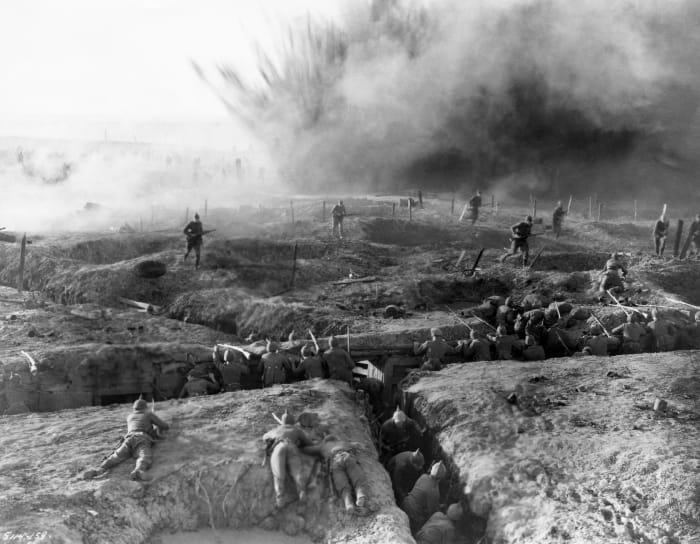
While Hollywood history is lousy with World War II films, the studios have been understandably less enthusiastic about the Great War. There are only so many historical liberties filmmakers can take to prettify trench warfare, and to what end? It is, however, the perfect conflict against which to set an antiwar film, and few movies have shaken up the world like Lewis Milestone’s adaptation of Erich Maria Remarque’s “All Quiet on the Western Front." The horrifying sequence of French soldiers charging through No Man’s Land into the German trenches is remarkably brutal for its time. Machine gun fire and mortars tear countless soldiers to pieces; those lucky enough to survive the run get the pleasure of diving into the enemy’s trench, where men stab, bludgeon and strangle one another in a tight-quarters life-or-death struggle. Later films like “Paths of Glory” and “Gallipoli” drive home the insanity of WWI with greater complexity, but Milestone’s film remains the most pitilessly direct takedown of the conflict.
"Glory"

Edward Zwick’s moving account of the Massachusetts 54th, the second African-American regiment sent to battle in the Civil War, climaxes with the men leading the charge on the Confederacy’s valuable beachhead, Fort Wagner. They assemble on the beach, beyond the reach of enemy artillery but still well within view of the ominous fortification they hope to breach. James Horner’s music swells as Matthew Broderick delivers a rousing speech, and the charge is on. The regiment has been warned in advance that it will endure heavy casualties amid hellish combat, so the perversely serene start — it’s basically a light jog along the ocean — throws us a little. Then the shelling starts. Within seconds, it’s a sprint to the walls, where the men can take some semblance of shelter in the sand. The final push into the fort is a suicide run, but this is about the country’s survival, not theirs. Even though they lose the battle, their loyalty to the cause and each other will eventually ensure the survival of the United States. None of this is subtly conveyed, but it sure is effective.
"The Lord of the Rings: The Two Towers"

Peter Jackson cleared the first Tolkien hurdle with 2001’s “The Fellowship of the Ring," but fans of the books knew that the series’ success hinged on the filmmaker nailing the pivotal battle of Helm’s Deep. It’s a classic last-stand sequence that builds slowly and ominously with the arrival of the Uruk-hai, which greatly outnumber the combatants behind the walls of the fortress. Save for a bit of gallows humor (generally at Gimli’s expense), the mood is grim. Despite some rousing heroics from the Fellowship, the Uruk-hai gain the upper hand. Jackson lets the situation grow as dire as possible before unleashing the Gandalf ex machina, at which point the tide turns sharply. It was pretty intense for a fantasy battle at the time, though it looks downright cheery nowadays compared to “Game of Thrones."
"Apocalypse Now"

It’s been copied and parodied countless times, but throw it on a big screen and crank up the Dolby surround, and you’ll find that Col. Kilgore’s Wagner-scored aerial assault on a Vietcong stronghold at the mouth of the Nùng River has lost none of its power to alternately amaze and disgust. Philippines President Ferdinand Marcos lent out his army’s helicopters to Francis Ford Coppola for this bravura sequence, which plays as close to actual warfare as any battle scene in film history. It’s a reminder that you’ve got to be at least a little mad to make a career out of combat. Then again, maybe the smell of napalm in the morning really is that intoxicating.
"Star Wars: Episode VI - The Return of the Jedi"

The Death Star trench run in “Star Wars” was just a warmup for the rebel fleet’s assault on the unfinished Death Star in “Return of the Jedi." This is one of the finest achievements of the optical effects era; the wizards at ILM found themselves rushing to complete an unprecedented number of f/x shots before the picture had to be locked (which was a lot earlier than the digital era, where nips and tucks can be done beyond the 11th hour). As with most of the films on this list, you really need to see “Return of the Jedi” on a massive screen to appreciate the insane scale of this sequence. Even as a coup of post-production (and viewed in its pre-Special Edition form), it feels every bit as impressive as Lean filming the taking of Aqaba. Every single one of these handmade crafts has to look battle-worn, and they have to soar with the rough grace of a Spitfire. Thirty-seven years later, it’s still extraordinary.
"Master and Commander: The Far Side of the World"
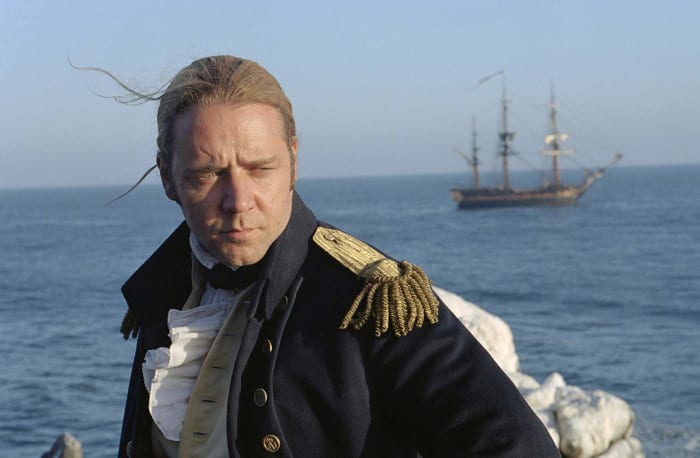
A thrilling, high-seas cat-and-mouse game comes to a bracing climax when HMS Surprise, led by Captain Jack Aubrey (Russell Crowe), turns the tables on the crafty French privateer Archeron by camouflaging itself as a whaling ship. It’s a tense sequence that requires the Surprise to leave itself fully vulnerable to enemy fire, but the gambit works and we’re treated to the kind of old-fashioned boarding party we haven’t seen on the big-screen since Burt Lancaster was swinging from ropes into battle.
"Cold Mountain"
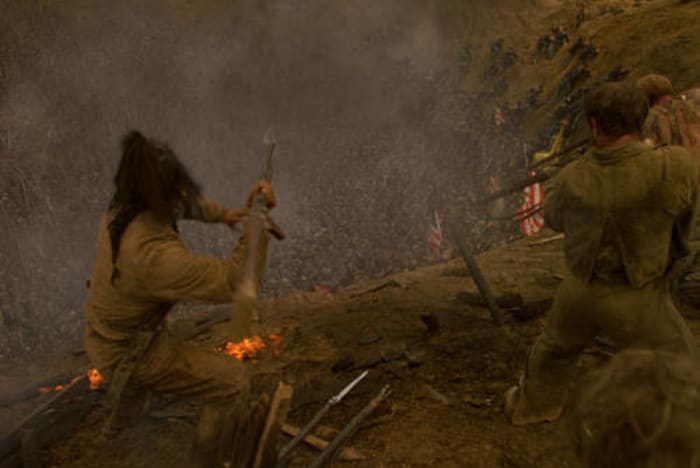
The Battle of the Crater is recreated in all its hellish vainglory in Anthony Minghella’s adapation of Charles Frazier’s Civil War odyssey. What seemed at first like a can’t-miss ambush of Confederate forces stationed in Petersburg, Virginia — via the detonation of a mine along their front line — turned into wholesale slaughter as the advancing Union infantry found themselves caught in a trap of their own making. Minghella bathes the screen in reddish-brown smoke but keeps us well oriented as to the particulars of this slaughter. Confederate soldiers hoot and holler as they engage in a “turkey shoot” from the rim, though some are eventually dragged down into the morass of death. Minghella plants his camera down in that pit of death to give us a sense of the claustrophobic nightmare in which these soldiers perished.
"Gladiator"

Ridley Scott’s Oscar-winning epic kicks off with a fiery battle between the Roman army and the Germanic tribes, which eats up a lot of screen time to establish the badass credentials of Mr. Maximus (Russell Crowe). But it’s all so lovingly designed by Scott’s usual first-rate collaborators (production designer Arthur Max and costume designer Janty Yates) and shot with such gusto by cinematographer John Mathieson (whose use of the 45-degree shutter creates that heightened stop-motion effect) that you’re left clamoring for more.
"War and Peace"
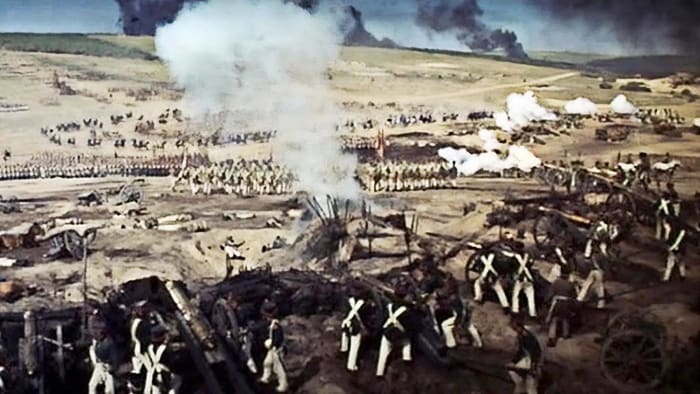
One of the benefits of the Cold War is that the Soviet Union’s Red Army wasn’t busy fighting land wars, which allowed it to be loaned out to director Sergei Bondarchuk for his lavish retelling of Leo Tolstoy’s “War and Peace." Even at a daunting seven hours, it’s a completely absorbing entertainment — both on a human and martial level. But we’re hear to talk the latter, and the film’s third section, which focuses on the Battle of Bordino in 1812, is mind-blowingly epic. Bondarchuk employed thousands of extras and actual soldiers whilst shooting the conflict in every manner imaginable. You get everything from breathtaking aerials to disorienting handheld footage at killing level. It’s as if Bondarchuk knew the future of the Russian film industry depended on his success (which it kind of did), so he left no technique unexploited. In execution, it’s both classical and experimental. Unfortunately, some of its impact will be lost on smaller screens.
"Henry V"

Kenneth Branagh’s staging of the Battle of Agincourt is impressive in its own right, but it’s what comes before that puts it over the top. The actor-director’s delivery of King Henry’s St. Crispin’s Day speech is a spellbinding three minutes of cinema. The camera tracks across Henry’s “band of brothers” as Patrick Doyle’s score builds to a galvanic peak. Though they’re outnumbered five-to-one by the French, these “happy few” are ready for combat. But once the talk is over and the French army closes in, Branagh cycles through a series of close-ups to show their brave facades gradually give way to fear and panic. Rather than cut to profile shot of the forces clashing, Branagh holds on his close-ups until the enemy is upon them. It’s a strangely effective subversion of filmic battlefield conventions.
"Black Hawk Down"

The entirety of Ridley Scott’s adaptation of Mark Bowden’s nonfiction account of the United States military’s botched raid on Mogadishu is combat. From the moment a Black Hawk chopper is unexpectedly shot down by an RPG, Scott plunges us into a chaotic situation from which there appears to be little chance of rescue. The film is pitched at such a consistently frenetic level that it’s hard to single out one continuous battle scene. But the evening raid on the village by the Little Bird gunships, which provides cover for the relief column to reach the marooned soldiers, feels like the standout. It’s a cautionary tale – don’t commit our troops to a conflict with a flimsy objective — that has not been heeded over the last three decades.
"Dunkirk"

Like “Black Hawk Down”, the whole of Christopher Nolan’s “Dunkirk” is a battle scene, and at a taut 106 minutes, it’s a one-of-a-kind white-knuckler that makes you wonder how anyone survived this conflict. On the ground, it’s a run-and-hide affair while the British troops wait for extraction; up in the air, it’s something we’ve never seen before. Old-school dogfights were stitched-together feats of stock footage and rear projection. “Top Gun” brought us into the modern day with a little turbulence and a surfeit of sleek bravado. While none of us has ever piloted a Spitfire in combat conditions, Nolan’s depiction of a plane that rattles and sputters like a poorly maintained Chevy Nova is altogether new. These are the planes that preserved our freedom? God bless each and every one of those pilots.
"The Wild Bunch"

Though it’s typically referred to as a “shootout” or a “gunfight," the overwhelming number of federales slaughtered during the finale of Sam Peckinpah’s revisionist masterpiece befit a full-on battle. Armed with a Browning machine gun and the world’s deepest reserves of piss and vinegar, Pike (William Holden), Dutch (Ernest Borgnine) and the remaining members of their gang wage a hellacious last stand against a legion of Mexican soldiers, one they appear bound to lose until Pike shoots up a crate of explosives. In that one moment, Dutch and the audience think these bastards might be home free. They’re not, of course, and the world is better off without them, but what due to replace them will be so much worse.
"Das Boot"

For such a stifling location, submarines have been the setting of many classic war films. Favorites will vary, but, objectively, the greatest U-boat movie of all time has to be Wolfgang Petersen’s “Das Boot." And the scene everyone remembers is the German submarine, commanded by a hale Jürgen Prochnow, diving deep below the ocean’s surface to avoid depth charges from a British convoy. On one hand, this lone wolf has done precisely as it’s been ordered; they’ve crippled two British ships. But this is the toll for their success: The deeper the U-boat plunges, the likelier it is to implode from the pressure.
"Zulu"

A relic of its era, Cy Endfield’s “Zulu” is, viewed in a vacuum, a masterfully directed war film with a corker of a final battle. It’s impossible to cheer on the British Army as it seeks to drive out the Zulu warriors, but Endfield’s film at least depicts it as an honorable opponent that pays tribute to its encroaching oppressors. As in “Kingdom of Heaven," we’re presented with a last stand that the conscience-stricken characters believe was unavoidable, but there’s never a doubt as to which side you’re supposed to support.
"300"

Zack Snyder’s dazzling adaptation of Frank Miller’s “300” gives us an invigorating, if hermetically sealed, recreation of the Battle of Thermopylae. The ultimate underdog tale of the Persian Wars has become a chest-pumping call to action for meatheads the world over, but that’s not the movie’s fault. Snyder’s film is stylistically singular. And he’s never topped the final battle of “300," which starts with Leonidas (Gerard Butler) nearly spearing Xerxes (Rodrigo Santoro). It’s the Spartans literally choosing to die on their feet rather than live on their knees.
"Ride with the Devil"
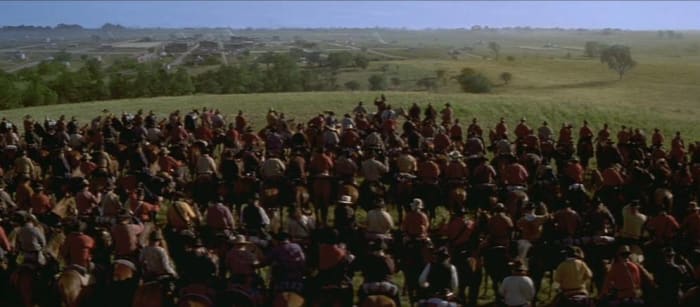
The centerpiece of Ang Lee’s hugely underrated Civil War drama finds the Missouri Bushwhackers laying waste to Lawrence, Kansas, a symbol of Union enlightenment and civility stretching west. The raid is ostensibly about freeing jailed allies awaiting execution, but it quickly turns into the wanton slaughter of just about every living thing within the city. The attack was truncated in the theatrical cut of the film but has been restored in the Cirterion Collection Director’s Cut. It’s a deeply disturbing depiction of stubborn traditionalists viciously lashing out against a future they know they cannot stop.
"Kingdom of Heaven"

Ridley Scott was on a mission to out-epic himself in the first half of the 2000s, and he hit his creative apex with this tale of the Crusades that climaxes with the 12th century Siege of Jerusalem. The 194-minute Director’s Cut is the only cut you should watch, and it’s easily one of the most cerebral studio tentpoles of the last 20 years. This is also the reason it was a box-office bomb: It’s the story of an enlightened man, Balian (Orlando Bloom), trying to steer his people away from ruinous, faith-driven conflict. When his pleas are ignored, the Muslims set upon Jerusalem. Forced to defend those within the walls of Jerusalem, Balian rouses the remaining citizenry to hold off the enemy long enough to force a truce. It is a costly, horrendously gory stand, and audiences don’t like war movies that end in ties. And this is why we suffer.
"The Last of the Mohicans"

There’s a stunning recreation of the fiery Siege of Fort William Henry smack dab in the middle of Michael Mann’s electrifying adaptation of James Fenimore Cooper’s required middle school reading. But because it’s used as the backdrop to the film’s ongoing human drama, you might not fully comprehend just how insanely massive it all is. It also arrives after a bravura ambush sequence in which Hawkeye (Daniel Day-Lewis), Chingachgook (Russell Means) and Uncas (Eric Schweig) rescue a British troop from a Huron war party. It starts with a few solitary attacks on the rear portion of the detachment, which gives way to an ominous silence. Mann cuts to Magua (Wes Studi) and his men stalking the British from the forest, waiting for the right moment to charge. When all hell breaks loose, Mann deftly shifts between handheld carnage and heroic slo-mo shots of Hawkeye rushing to and fro to rescue his soon-to-be-beloved Cora (Madeleine Stowe). It’s pure Hollywood, and it’s utterly breathtaking.
Jeremy Smith is a freelance entertainment writer and the author of "George Clooney: Anatomy of an Actor". His second book, "When It Was Cool", is due out in 2021.
More must-reads:
Customize Your Newsletter
 +
+
Get the latest news and rumors, customized to your favorite sports and teams. Emailed daily. Always free!
PRIVACY POLICY EDITORIAL POLICY CONTACT US
ABOUT YARDBARKER TERMS OF SERVICE
Use of this website (including any and all parts and
components) constitutes your acceptance of these
Terms of Service and Privacy Policy.
This site is for entertainment purposes only.
There is no gambling offered on this site.
Gambling Problem? Call 1-800-Gambler.

